
Funk-Gong Orchestra
Typ: DB400 + DB50
07.22
REV Ritter GmbH
Frankenstr. 1-4 • 63776 Mömbris • Deutschland • www.rev.de
E-Mail: service@rev.de • D Service-Telefon: 00800 50 00 27 35*
*kostenfreie Service-Rufnummer, Mobilfunkpreise abweichend

2
Allgemeines
Lesen Sie die nachfolgende Bedienungsanleitung vor Inbetriebnahme aufmerksam
durch und bewahren Sie sie für späteres Nachschlagen auf. Der Klingeltaster ist für den
Außenbereich und nicht für den rauen Betrieb geeignet. Der Gong ist für die Montage in
trockenen Innenräumen (IP20) vorgesehen.
Hinweise
• Das Produkt ist nur zur Verwendung mit den entsprechenden Batterien konzipiert.
• Dieses Set besteht aus je einem Sender (Klingeltaster) und einem Empfänger (Gong).
• Dieses Set bietet Ihnen die Möglichkeit eine Klingelanlage aufzubauen, ohne eine Verkabelung
vorzunehmen.
• Dieses Set ist nicht für die Integration in eine bestehende Klingelanlage vorgesehen.
• Die Reichweite zwischen Sender und Empfänger beträgt max. 150m im freien Feld. Das Funksignal
wird durch Wände, Mauern, Mobiliar und andere Hindernisse gesendet, ist allerdings abhängig von
den baulichen Gegebenheiten - Mauern, insbesondere Stahlbetonwände und -decken führen zu einer
Verringerung der Reichweite. Verändern Sie ggf. den Standort von Sender und/oder Empfänger.
• Durch Abschirmungen von Metallteilen kann der Empfang stark beeinträchtigt werden, so dass
eine Übermittlung des Signals nicht möglich ist. Befestigen Sie deshalb den Sender niemals auf
Metallflächen.
• Wenn Sie das Produkt für längere Zeit nicht nutzen, entfernen Sie die Batterien.
• Das Produkt hat keine austauschbaren Teile. Versuchen Sie nicht das Produkt zu öffnen oder zu
reparieren.
Technische Daten
Reichweite Freifeld: max. 150m
Frequenz: 433,92MHz
Frequenzband: 433,05 – 434,79MHz
Max. Sendeleistung: <10mW
Batterie: Gong: 3x 1,5V AAA (nicht im Lieferumfang enthalten)
Klingeltaster: 1x 12V 23A (im Lieferumfang enthalten)
Schutzart: Gong: IP20, nur zur Verwendung in trockenen Innenräumen
Klingeltaster: IP55, zur Verwendung im Außenbereich
Lautstärke: 90dB (5-Stufen regelbar: 4 Lautstärkestufen + Stummschaltung)
Anzahl Melodien: 58 Melodien wählbar
Schutzklasse: Schutzkleinspannung
Sicherheitshinweise Batterien
• Eine falsche Polung der Batterien kann das Gerät zerstören.
• Batterien nicht in Reichweite von Kindern aufbewahren, insbesondere solche nicht, die
verschluckt werden können.
• Es sollte nicht versucht werden, Batterien durch Aufheizen oder ähnliche Maßnahmen zu
reaktivieren. Primärbatterien dürfen nicht geladen werden, da dieses zum Elektrolytaustritt, zur
Explosion oder zu Feuer führen kann.
• Batterien nicht ins Wasser tauchen und nicht an einem feuchten, sondern einem trockenen und
kühlen Ort aufbewahren.
• Batterien nicht ins Feuer werfen, nicht öffnen sowie weder selbst löten noch schweißen.
• Batterien nicht kurzschließen.
Inbetriebnahme
Gong: Öffnen Sie das Batteriefach des Gongs und legen Sie Batterien ein. Batterieanzahl und -typ
siehe „Technische Daten“. Schließen Sie anschließend das Batteriefach wieder.
Klingeltaster: Entfernen Sie die rückseitige Montageplatte indem Sie sie von der Rückseite des
Klingeltasters schieben (siehe Abbildung rechts). Öffnen Sie das Batteriefach des Klingeltasters mit
dem beiliegenden Schraubenzieher. Entfernen Sie den Isolierstreifen im Batteriefach. Schließen Sie
anschließend das Batteriefach wieder.
DE

3
Codierung erstellen/löschen
Gong und Klingeltaster dieses Sets wurden bereits werksseitig codiert. Wenn Sie die Codierung
erneuern, oder weitere Gongs/Klingeltaster hinzufügen möchten, gehen Sie wie folgt vor.
Codierung von Gong und Klingeltaster:
1. Wählen Sie vor der Codierung Ihren bevorzugten Klingelton aus (siehe „Lautstärkeeinstellung/
Melodienauswahl“).
2. Drücken Sie die Taste „Lautstärke“ am Gong für 5 Sekunden. Sie hören ein Ding-Dong und die LED
fängt an zu blinken, um zu signalisieren, dass der Codierungsmodus aktiv ist.
3. Drücken Sie den Klingeltaster während des Blinkens um ein Signal an den Gong zu senden. Wenn die
Codierung erfolgreich ist, gibt der Gong den ausgewählten Klingelton automatisch wieder.
Hinweise:
• Der Codierungsmodus wird nach Abschluss der Codierung automatisch beendet.
• Der Codierungsmodus ist nur für 5 Sekunden aktiv.
• Der Codierungsmodus ist immer nur für einen Empfänger (Gong) und Sender (Klingeltaster,
Bewegungsmelder, Fensterkontakt) gleichzeitig verfügbar. Wiederholen Sie die oben beschriebene
Codierung, wenn Sie mehrere Empfänger/Sender codieren möchten.
• Sie können jedem Sender bei der Codierung einen anderen Klingelton zuordnen und so eine
Rufunterscheidung erstellen.
• Einem Sender (Klingeltaster, Bewegungsmelder, Fensterkontakt) können bis zu 20 Empfänger
(Gong) zugeordnet werden. Siehe „Kompatible Produkte“.
• Einem Empfänger (Gong) können bis zu 20 Sender (Klingeltaster, Bewegungsmelder,
Fensterkontakt) zugeordnet werden. Siehe „Kompatible Produkte“.
Codierung löschen:
Drücken Sie die Taste „Melodie vorwärts“ für 5 Sekunden, um den Gong auf Werkseinstellungen
zurückzusetzen. Wenn der Gong Ding-Dong abspielt und die LED blinkt war das Zurücksetzen
erfolgreich. Alle Codierungen werden gelöscht.
Hinweis: Die Codierung zwischen Gong und Klingeltaster bleibt solange bestehen, bis Sie die Codierung
wie oben beschrieben löschen. Auch wenn Sie die Batterien entfernen.
Lautstärke
Melodien rückwärts
Melodien vorwärts
Montageplatte
nach oben
schieben zur
Demontage. Batteriefach
Gong Rückansicht
Klingeltaster Rückansicht
Gong Seitenansicht
Batteriefach
Aufhängelasche

4
Lautstärkeeinstellung/Melodienauswahl
Drücken Sie die Taste „Lautstärke“/„Melodie vorwärts/rückwärts“ so oft, bis die gewünschte
Lautstärke/Melodie ertönt.
Die Lautstärke können Sie jederzeit ändern und ist unabhängig vom zugehörigen Sender. Die zuletzt
ausgewählte Lautstärke wird automatisch gespeichert.
Sie können weiterhin durch Drücken von „Melodie vorwärts/rückwärts“ verschiedene Klingeltöne
abspielen. Dies hat keinen Einfluss auf den gespeicherten Klingelton bei der Codierung zwischen
Sender und Empfänger.
Montage
Wählen Sie einen geeigneten Platz für Gong und Klingeltaster. Prüfen Sie die gewählten Stellen auf
Leitungen bevor Sie Löcher bohren.
Tipp: Testen Sie die gewünschte Funktion vor einer endgültigen Montage an dem von Ihnen
gewählten Montageort.
Gong: Drehen Sie die Schrauben in die Wand bis sie noch wenige Millimeter hervorstehen. Hängen
Sie den Gong an die vorgesehenen Aufhängelaschen.
Klingeltaster: Montieren Sie die Montageplatte mit den beigelegten Schrauben. Schieben Sie den
Klingeltaster auf die Montageplatte, oder verwenden Sie das beiliegende doppelseitige Klebeband
für die Montage.
Fehlersuche
Fehlerbeschreibung Fehlerbehebung
Der Gong klingelt
nicht
• Überprüfen Sie die Batterien des Empfängers (Gongs) und des
Senders (Klingeltaster, Bewegungsmelder, Fensterkontakt).
Wechseln Sie die Batterien, wenn notwendig.
• Überprüfen Sie, ob die Entfernung zwischen Empfänger (Gong)
und Sender (Klingeltaster, Bewegungsmelder, Fensterkontakt) zu
groß ist. Verringern Sie die Entfernung um wieder innerhalb der
Reichweite zu sein, wenn notwendig.
• Überprüfen Sie, ob der Empfänger (Gong) mit dem Sender
(Klingeltaster, Bewegungsmelder, Fensterkontakt) codiert ist.
Codieren Sie Empfänger und Sender wie oben beschrieben, wenn
notwendig.
• Überprüfen Sie die Lautstärkeeinstellung des Empfängers (Gong).
Erhöhen Sie die Lautstärke, wenn notwendig.
Reichweite ist gering • Überprüfen Sie den Montageuntergrund und die Umgebung.
Metalloberflächen können die Reichweite reduzieren.
Vermeiden Sie die Montage auf oder in der Nähe von Metall.
• Bauliche Gegebenheiten (z.B. Betonwände oder -decken) können
die Reichweite beeinflussen.
• Andere Funkprodukte in der Nähe können die Reichweite
beeinflussen. Ändern Sie den Standort von Empfänger (Gong)
und/oder Sender (Klingeltaster, Bewegungsmelder,
Fensterkontakt) oder des anderen Funkprodukts.
• Überprüfen Sie die Batterien von Empfänger (Gong) und Sender
(Klingeltaster, Bewegungsmelder, Fensterkontakt). Wechseln Sie
die Batterien, wenn notwendig.

5
WEEE-Entsorgunghinweis
Gebrauchte Elektro- und Elektronikgeräte dürfen gemäß europäischer Vorgaben nicht mehr
zum unsortierten Abfall gegeben werden. Das Symbol der Abfalltonne auf Rädern weist auf
die Notwendigkeit der getrennten Sammlung hin. Helfen auch Sie mit beim Umweltschutz
und sorgen dafür, dieses Gerät, wenn Sie es nicht mehr nutzen, in die hierfür vorgesehenen
Systeme der Getrenntsammlung zu geben. RICHTLINIE 2012/19/EU DES EUROPÄISCHEN
PARLAMENTS UND DES RATES vom 04. Juli 2012 über Elektro- und Elektronik-Altgeräte.
Batterie-Entsorgungshinweis
Batterien und Akkus dürfen nicht in den Hausmüll. Jeder Verbraucher ist gesetzlich
verpflichtet, alle Batterien und Akkus, egal ob sie Schadstoffe enthalten oder nicht, bei
einer Sammelstelle seiner Gemeinde/seines Stadtteils oder im Handel abzugeben, damit
sie einer umweltschonenden Entsorgung zugeführt werden können. Batterien und Akkus
bitte nur in entladenem Zustand abgeben!
CE-Konformitätserklärung
Hiermit erklärt REV Ritter GmbH, dass der Funkanlagentyp DB400 + DB50 der
RICHTLINIE 2014/53/EU entspricht. Vollständige CE-Konformitätserklärung siehe
unter: www.rev.de unter der entsprechenden Artikel- oder Typnummer.
Service
Haben Sie Fragen zu unserem Produkt oder eine Beanstandung, dann informieren Sie sich bitte im
Internet unter www.rev.de über die Kontaktaufnahme und Retourenabwicklung oder senden eine
E-Mail an service@rev.de.
Wir weisen darauf hin, dass wir keine Sendungen ohne Retourennummer bearbeiten können und deren
Annahme verweigern müssen.
Kompatible Produkte
Artikelnummer Typnummer Bezeichnung
0082600103 DB500 + DB50 Funkgong Orchestra Quadrat weiß
+ Klingeltaster Orchestra weiß
0082610103 DB500AC + DB50 Funkgong Orchestra Quadrat für Steckdose weiß
+ Klingeltaster Orchestra weiß
0082620103 DB400 + DB50 Funkgong Orchestra Rechteck weiß
+ Klingeltaster Orchestra weiß
0082630103 DB400AC + DB50 Funkgong Orchestra Rechteck für Steckdose weiß
+ Klingeltaster Orchestra weiß
0083950103 DB50 Funkklingeltaster Orchestra weiß
0083960103 SA-IR07-NWX03-D Funkbewegungsmelder Orchestra weiß
0083970103 SA-MC08-N04-D Funkfensterkontakt Orchestra weiß
0082650103 B6 (AC) + B6 (DC)
+ DB50
Funkgong-Set Orchestra Gong Q + Gong Q
Steckdose weiß + Klingeltaster weiß
0082640103 B7 (DC)
+ SA-IR07-NWX03-D
+ DB50
Funkgong-Set Orchestra Gong Q +
Funkbewegungsmelder weiß + Klingeltaster weiß

6

7

8
DE Eine mehrsprachige Version dieser Anleitung finden Sie unter www.rev.de. Alternativ
können Sie auch dem nebenstehenden QR-Code folgen.
GB You can find a multilingual version of this manual at www.rev.de. Alternatively, you can
also follow the QR-code below.
FR Une version multilingue de ce manuel vous trouverez sous www.rev.de.
Alternativement, vous pouvez suivre le code QR adjacent.
ES Una versión multilingüe de este manual se pueden encontrar bajo www.rev.de. Como
alternativa, se puede seguir el Código QRadyacente.
SI Na voljo je večjezična različica tega priročnika www.rev.de. Lahko pa vidite tudi
sosednjo Sledite QR kodi.

9
General information
Please thoroughly read the following operating instructions before placing the device
into service and keep for future reference. The bell button is suitable for operation in
protected outdoor areas and not in harsh environments. The wireless chime is intended
for installation in dry indoor areas (IP20).
Note
• The wireless chime is only designed for use with the appropriate batteries.
• This wireless chime set consists of a transmitter and a receiver.
• In combination with a receiver (gong), the motion detector offers you the opportunity to set up a
bell system without wiring.
• This set is not intended for integration into an existing bell system.
• The range between transmitter and receiver is maximum 100m in the open field. The radio signal
is transmitted through walls, walls, furniture and other obstacles, but depends on the structural
conditions - walls, especially reinforced concrete walls, heat-insulating glazing and ceilings lead to a
reduction in range.
• Shielding caused by metal parts can severely impair reception, so that the signal cannot be transmitted.
For this reason, never attach the transmitter to metal surfaces.
• If the product is not in use for a long period of time, remove the batteries.
• The product has no replaceable parts. Do not try to open or repair the product.
Technical Data
Range (free field): max. 150m
Frequency: 433,92MHz
Frequency band: 433,05 – 434,79MHz
Max. transmission power: <10mW
Battery: Gong: 3x 1,5V AA (not included in delivery)
Klingeltaster: 1x 12V 23A (included in delivery)
Degree of protection: Receiver: IP20 (for dry indoor use only)
Transmitter: IP55 (protected outdoor area)
Volume: 90dB (5-stage adjustable)
Number of melodies: 58 melodies for selection
Degree of protection: Safety Extra Low Voltage
Safety Instructions for batteries:
• Incorrect polarity of the batteries can destroy the unit.
• Do not store batteries within reach of children, especially those that can be swallowed.
• Do not attempt to reactivate batteries by heating or similar measures.
• Primary batteries must not be charged as this can lead to electrolyte leakage, explosion or fire.
• Do not immerse batteries in water and store them in a dry and cool place, not in a damp place.
• Do not throw batteries into the fire, do not open them or solder or weld them yourself.
• Do not short-circuit batteries.
Set up
Chime: Open the battery compartment and insert the batteries. Number and type of batteries refer to
“Technical Specifications”. Then, close the battery compartment again.
Bell push: Remove the mounting plate on the rear side by pushing it off the rear side of the bell push
(see illustration on the right). Open the battery compartment of the bell push using the enclosed
screwdriver. Remove the insulation strip in the battery compartment. Then, close the battery
compartment again.
Creating/deleting coding
Chime and bell push in this set were already coded in the factory. If you want to renew the coding or add
additional chimes/bell pushes, please proceed as follows.
GB

10
Coding the chime and bell button::
1. Before coding, select your preferable bell tone (refer to “Volume setting/Melody selection”).
2. Press the “Volume” button on the chime for 5 seconds. You will hear a ding-dong and the LED starts
blinking, to signalise that the coding mode is active.
3. Press the bell push, to send a signal to the chime. If the coding was successful, the chime will
automatically play back the bell tone.
Note:
• The coding mode is automatically terminated after concluding the coding.
• The coding mode is only active for 5 seconds.
• The coding mode is always only available for one receiver (chime) and transmitter
(bell push, motion detector, window contact) simultaneously. Repeat the above-mentioned coding if
you would like to code multiple receivers/transmitters.
• You can assign a different bell tone to each transmitter when coding and in doing so, create a call
differentiation.
• Up to 20 receivers (chime) can be assigned to one transmitter (bell push, motion
detector, window contact). Refer to “Compatible Products”.
• Up to 20 transmitters (bell pushes, motion sensors, window contacts)
can be assigned to one receiver (chime). Refer to “Compatible Products”.
Deleting the coding:
Press the “Melody forward” button for 5 seconds, to reset the chime to the factory settings. When
the chime plays back ding-dong and the LED blinks, resetting was successful.
Note: The coding between chime and window contact exists, until you delete the coding as
described above. Even if you remove the batteries.
chime rear side
bell push rear side
chime side elevation
volume
Melodies
backwards
Melodies forward
battery
compartment
Suspension clip
Push mounting
plate upwards for
disassembly. battery
compartment

11
Volume setting/Melody selection
Press the “Volume”/”melody forward/backward” button until you hear the required volume/melody.
You can change the volume at any time and this is independent of the corresponding transmitter. The
last selected volume is automatically saved.
You can still replay different bell tones by pressing “Melody forward/backward”. This does not effect
the saved bell tone when coding between transmitter and receiver.
Installation
Choose a suitable location for the chime and bell push. Check the selected location for wiring before
drilling any holes.
Tip: Test the desired function before ultimately installing the device at the place of installation you
chose.
Chime: Screw the screws into the wall until they are only protruding by a few millimeters. Hang the
chime on the intended suspension clips.
Bell push: Mount the mounting plate using the enclosed screws. Push the bell push onto the moun-
ting plate or use the enclosed double-sided tape for mounting.
Troubleshooting
Error
description
Error correction
The chime does not
sound
• Check the batteries of the receiver (chime) and the transmitter
(bell push, motion detector, window contact). Change the
batteries if necessary.
• Check whether the distance between the receiver (chime) and
transmitter (bell push, motion detector, window contact) is too far.
If necessary, reduce the distance, to get back within the range.
• Check whether the receiver (chime) is coded with the transmitter
(bell push, motion detector, window contact). If necessary, code
the receiver and transmitter as described above.
• Check the volume setting of the receiver (chime). Increase the
volume if necessary.
Range is low • Check the mounting surface and the surroundings. Metal surfaces
can reduce the range. Avoid installation on or near metal.
• Structural conditions (e.g. concrete walls or ceilings) can have an
effect on the range.
• Other wireless products in the vicinity can have an effect on
the range. Change the location of the receiver (chime) and/or
transmitter (bell push, motion detector, window contact) or the
other wireless product.
• Check the batteries of the receiver (chime) and transmitter (bell
push, motion detector, window contact). Change the batteries if
necessary.

12
WEEE Disposal Notice
According to the European regulations, used electrical and electronic equipment may no
longer be put out into unsorted rubbish. The symbol on the wheeled rubbish bin points out
the necessity for separated collection. Help us to protect the environment and ensure that
this unit is put out in the appropriate systems for separate collection once you do not use it
any longer. DIRECTIVE OF THE EUOROPEAN PARLIAMENT AND COUNCIL of 4th July 2012
concerning used electrical and electronic equipment.
Battery disposal instructions
Batteries and rechargeable batteries must not be disposed of with household waste. Every
consumer is legally obliged to dispose of all batteries and rechargeable batteries, whether
or not they contain harmful substances, to a suitable commercial or municipal collection
point municipality/district so that they can be disposed of in an environmentally friendly
manner. Batteries and rechargeable batteries should only be returned in a discharged
state!
CE Conformity Statement
REV Ritter GmbH hereby declares that it complies with radio equipment type
DB400 + DB50 according to DIRECTIVE 2014/53/EU. The complete CE Declaration of
Conformity can be found under: www.rev.de under the corresponding article or type
number.
Compatible Products
article number type number designation
0082600103 DB500 + DB50 Wireless chime Orchestra square white + bell push
Orchestra white
0082610103 DB500AC + DB50 Wireless chime Orchestra square for socket white +
bell push Orchestra white
0082620103 DB400 + DB50 Wireless chime Orchestra rectangle white + bell
push Orchestra white
0082630103 DB400AC + DB50 Wireless chime Orchestra rectangle for socket white
+ bell push Orchestra white
0083950103 DB50 Wireless bell push Orchestra white
0083960103 SA-IR07-NWX03-D Wireless motion detector Orchestra white
0083970103 SA-MC08-N04-D Wireless window contact Orchestra white
0082650103 B6 (AC) + B6 (DC)
+ DB50
Wireless chime set Orchestra Gong Q + Gong Q
socket white
+ bell push white
0082640103 B7 (DC)
+ SA-IR07-NWX03-D
+ DB50
Wireless chime set Orchestra Gong Q +
wireless motion detector white
+ bell push white

13
Généralités
Veuillez lire attentivement le présent manuel d’utilisation avant la mise en service et
conservez-le soigneusement pour pouvoir le consulter ultérieurement. Le bouton de
sonnette est conçu pour être utilisé à l’extérieur sous abri. Il ne faut pas l’exposer à de
rudes conditions. Le carillon radio est prévu pour être monté à l’intérieur,
dans des pièces sèches (IP20).
Consignes
• Le carillon radio est conçu pour être utilisé seulement avec les piles qui conviennent.
• Ce kit de carillon radio est constitué d’un émetteur et d’un récepteur.
• En combinaison avec un récepteur (gong), le détecteur de mouvement vous offre la possibilité de
configurer un système de sonnerie sans câblage.
• Ce kit n‘est pas destiné à être intégré dans un dispositif de sonnerie déjà existant.
• La portée entre l’émetteur et le récepteur s’élève à 100 m au maximum en champ libre. Si le signal
radio est émis à travers des cloisons, des murs, du mobilier et d’autres obstacles, la portée dépend
des caractéristiques de la construction - les murs, plus particulièrement les murs en béton armé, les
vitrages et les plafonds à isolation thermique réduisent la portée.
• Les écrans que constituent des parties métalliques peuvent entraver fortement la réception si bien
qu’une transmission du signal n’est plus possible. C’est pourquoi vous ne devez jamais coller
l’émetteur sur des surfaces métalliques.
• Si vous n‘utilisez pas le produit pendant une longue période, retirez les piles.
• Ce produit ne possède pas d‘éléments remplaçables. Ne tentez pas d‘ouvrir ou de réparer le
produit.
Caractéristiques techniques
Portée en champ libre: max. 150m
Fréquence: 433,92MHz
Bande de fréquences: 433,05 – 434,79MHz
Puissance d‘émission maximale: <10mW
Pile: Récepteur: 3x 1,5V AA (ne sont pas comprises dans
les fournitures)
Émetteur: 1x 12V 23A (comprise dans les fournitures)
Degré de protection : Récepteur : IP20, (utilisable seulement à l’intérieur et dans des
pièces sèches)
Émetteur : IP55 (à l’extérieur sous abri)
Volume sonore: 90dB (réglage 5 niveaux)
Nombre de mélodies: 58 mélodies au choix
Classe de protection : Basse tension de protection
Consignes de sécurité concernant les pilesn
• Une erreur de polarité peut détruire l’appareil.
• Ne pas laisser les piles à portée des enfants, en particulier celles qui peuvent être avalées.
• On ne devrait pas essayer de réactiver des piles en les réchauffant ou en prenant des mesures
analogues. Il ne faut pas recharger les piles et les batteries de piles parce que le rechargement peut
provoquer une fuite d’électrolyte et provoquer une explosion ou un feu.
• Ne pas plonger les piles dans l’eau, ne pas les conserver dans un endroit humide mais dans un endroit
sec et frais.
• Ne pas jeter les piles dans le feu, ne pas les ouvrir, ne pas les souder ou les braser soi-même. Ne pas
court-circuiter les piles.
Mise en service
Carillon: Ouvrez le compartiment à pile du carillon et insérez une pile. Type et nombre de piles voir
«Caractéristiques techniques». Enfin, fermez à nouveau le compartiment à pile.
Bouton d‘appel: Enlevez la plaque de montage arrière en la glissant de la face arrière
du bouton d‘appel (voir illustration à droite). Ouvrez le compartiment à piles du bouton d‘appel avec
le tournevis fourni. Retirez la bande isolante dans le compartiment à pile. Puis fermez
à nouveau le compartiment à piles.
FR

14
Créer/supprimer un codage
Le carillon et le bouton d‘appel de ce set ont déjà été codés en usine. Si vous souhaitez renouveler le
codafge ou ajouter d‘autres carillons/boutons d‘appel, procédez comme suit. Codage du carillon et du
bouton d‘appel.
Codage du carillon et du bouton d‘appel ::
1. Sélectionnez avant le codage votre sonnerie préférée (voir «Réglage du volume sonore/ Sélection de
mélodie»).
2. Appuyez sur la touche «Volume» sur le carillon pendant 5 secondes. Vous entendez un Ding-dong et
la LED commence à clignoter pour signaliser que le mode codage est actif.
3. Appuyez sur le bouton d‘appel pour envoyer un signal au carillon. Lorsque le codage a été réalisé avec
succès, le carillon joue de manière automatique la sonnerie sélectionnée.
Indications :
• Le mode codage s‘arrête automatiquement à l‘issue du codage.
• Les mode codage est actif durant 5 secondes uniquement.
• Le mode codage est disponible simultanément pour un seul récepteur (carillon) et un seul émetteur
(bouton d‘appel, détecteur de mouvement, contact de fenêtre) uniquement. Répétez le codage décrit
ci-dessus si vous souhaitez coder plusieurs récepteurs/émetteurs.
• Vouz pouvez attribuer à chaque émetteur une autre sonnerie et créer ainsi une distinction d‘appels.
• Jusqu‘à 20 récepteurs (carillon) peuvent être attribués à un émetteur (bouton d‘appel, détecteur de
mouvement, contact de fenêtre). Voir «Produits compatibles».
• Jusqu‘à 20 émetteurs (bouton d‘appel, détecteur de mouvement, contact de fenêtre)peuvent être
attribués à un récepteur (carillon). Voir «Produits compatibles».
Supprimer un codage:
appuyez sur la touche «Mélodie avant » sur le carillon pendant 5 secondes pour réinitialiser le
carillon à ses réglages par défaut. Lorsque le carillon joue le ding-dong et que la LED clignote, cela
signifie que le réinitialisation s‘est effectuée avec succès.
Indication : le codage entre le carillon et le contact fenêtre persiste jusqu‘à ce que nous supprimiez
le codage comme décrit ci-dessus. Même lorsque vous enlevez les piles.
Gong vue arrièreGong vue de côté
Volume
Mélodies à l‘envers
Mélodies en avant
compartiment
de la batterie
Languette
d‘accrochage
Bouton de cloche vue arrière
Plaque de montage
à glisser vers le haut
pour le démontage. compartiment
de la batterie

15
Réglage du volume/Choix de la mélodie
Appuyez sur la touche «Volume»/« Mélodie avant/arrière» aussi souvent jusqu‘à ce que le volume/
la mélodie d‘esiré(e) retentisse.
Vous pouvez à tout moment modifier le volume et celui-ci est indépendant de l‘émetteur
correspondant. Le volume sélectionné en dernier est automatiquement sauvegardé. Vous pouvez
en outre jouer différentes sonneries
en appuyant sur «Mélodie avant/arrière». Ceci n‘a aucune influence sur la
sonnerie sauvegardée lors du codage entre l‘émetteur et le récepteur.
Montage
Choisissez un endroit adapté pour y installer le carillon et le bouton d‘appel. Avant de percer, assurez-
vous de l‘absence de lignes et de conduites aux endroits choisis.
Conseil: Testez la fonction souhaitée avant le montage définitif au lieu de montage que vous avez
choisi.
Carillon: Vissez les vis dans le mur jusqu‘à ce qu‘elles ne dépassent plus que de quelques
millimètres. Accrochez le carillon à la languette d‘accrochage prévue.
Bouton d‘appel: Montez la plaque de montage avec les vis fournies. Glissez le bouton d‘appel sur la
plaque de montage ou utilisez le ruban adhésif double face pour le montage.
Recherche d‘erreur
Description d‘erreur Dépannage
Le carillon ne sonne
pas
• Vérifiez les piles du récepteur (carillon) et de l‘émetteur (bouton
d‘appel, détecteur de mouvement, contact de fenêtre). Changez
les piles si nécessaire.
• Vérifiez si la distance entre le récepteur (carillon) et l‘émetteur
(bouton d‘appel, détecteur de mouvement, contact de fenêtre) est
trop grande. Diminuez la distance pour être de nouveau dans la
portée, si c‘est nécessaire.
• Vérifiez si le récepteur (carillon) et l‘émetteur (bouton d‘appel,
détecteur de mouvement, contact de fenêtre) est codé. Codez
l‘émetteur et le récepteur comme décrit ci-dessous si nécessaire.
• Vérifiez le réglage du volume du récepteur (carillon). Montez le
volume, si nécessaire.
La portée est faible • Contrôlez la surface de montage et l‘environnement. Les surfaces
métalliques peuvent réduire la portée. Évitez de monter le
détecteur sur ou près de métal.
• Certaines conditions architecturales (par ex. des murs ou des
plafonds en béton) peuvent avoir une influence sur la portée.
• Les autres produits radio à proximité peuvent avoir une influence
sur la portée. Changez l‘emplacement du récepteur (carillon)
et/ou de l‘émetteur (bouton d‘appel, détecteur de mouvement,
contact de fenêtre) ou de l‘autre produit radio.
• Vérifiez les piles du récepteur (carillon) et de l‘émetteur (bouton
d‘appel, détecteur de mouvement, contact de fenêtre). Changez
les piles si nécessaire.

16
Consignes d’élimination conformément à la directive DEEE (déchets d’équipements
électroniques et électriques)
Les appareils électriques et électroniques usagés ne doivent plus être jetés dans les ordures
non triées conformément aux prescriptions européennes. Le symbole de la poubelle à
roulettes indique le caractère indispensable de la collecte séparée des déchets. Aidez-nous
à protéger l’environnement et veillez à éliminer l’appareil, si vous ne l’utilisez plus, dans les
systèmes de collecte séparée prévus à cet effet. DIRECTIVE 2012/19/EU DU PARLEMENT
EUROPÉEN ET DU CONSEIL du 04 juillet 2012 relative aux déchets d’équipements électriques et
électroniques.
Consignes d’élimination des piles
Les piles et les accumulateurs ne doivent pas être éliminés avec les ordures ménagères.
Selon la législation en vigueur, chaque consommateur est tenu de remettre toutes les
piles et tous les accumulateurs - qu’ils contiennent ou non des substances nocives - à un
centre de collecte de sa commune ou de son quartier ou encore dans le commerce pour
qu’ils soient éliminés dans le respect de l’environnement. Veuillez n’éliminer les piles et les
accumulateurs que lorsqu’ils sont déchargés !
Déclaration de conformité CE
Par la présente, la société REV Ritter GmbH déclare que le type de système radio
DB400 + DB50 répond aux exigences de la DIRECTIVE 2014/53/EU. Vous trouverez
une déclaration de conformité CE complète à l’adresse :
www.rev.de au numéro de type ou d’article correspondant.
produits compatibles
numéro d‘
article
numéro de type désignation
0082600103 DB500 + DB50 Carillon radio Orchestra carré blanc
+ bouton d‘appel Orchestra blanc
0082610103 DB500AC + DB50 Carillon radio Orchestra carré pour prise électrique
blanc
+ bouton d‘appel Orchestra blanc
0082620103 DB400 + DB50 Carillon radio Orchestra rectangulaire blanc
+ bouton d‘appel Orchestra blanc
0082630103 DB400AC + DB50 Carillon radio Orchestra rectangulaire pour prise
électrique blanc
+ bouton d‘appel Orchestra blanc
0083950103 DB50 Bouton d‘appel radio Orchestra
blanc
0083960103 SA-IR07-NWX03-D Détecteur de mouvement Orchestra blanc
0083970103 SA-MC08-N04-D Contact de fenêtre radio Orchestra blanc
0082650103 B6 (AC) + B6 (DC)
+ DB50
Set carillon radio Orchestra Carillon Q + Carillon Q
prise électrique blanc
+ bouton d‘appel blanc
0082640103 B7 (DC)
+ SA-IR07-NWX03-D
+ DB50
Set carillon radio Orchestra Carillon Q + détecteur
de mouvement blanc
+ bouton d‘appel blanc

17
Generalidades
Por favor, lea el siguiente manual de instrucciones antes de usar el dispositivo y
consérvelo para futuras consultas. El pulsador de timbre está diseñado para entornos
exteriores protegidos y no para su funcionamiento a la intemperie. El gong inalámbrico
está diseñado para ser instalado en interiores secos (IP20).
Avisos
• El gong inalámbrico está diseñado exclusivamente para funcionar con las baterías adecuadas.
• Este set de gong inalámbrico está formado por un emisor y un receptor.
• En combinación con un receptor (gong), el detector de movimiento le ofrece la oportunidad de
configurar un sistema de timbre sin cableado.
• Este set no está indicado para ser integrado en un timbre ya instalado.
• El alcance entre el emisor y el receptor es de máx. 100m en campo abierto. La señal de radio se
transmite a través de paredes, muros, muebles y otros obstáculos, pero dependiendo de las
condiciones estructurales: las paredes, especialmente las de hormigón armado, los acristalamientos
de aislamiento térmico y los techos provocan una reducción del alcance.
• Los apantallamientos causados por piezas metálicas pueden perjudicar gravemente la recepción, por
lo que la señal dejará de transmitirse. Por esta razón, nunca pegue el emisor a superficies metálicas.
• Retire las pilas cuando no vaya a utilizar el producto durante un largo periodo de tiempo.
• El producto no lleva piezas que deban ser cambiadas. No intente abrir el producto ni repararlo por
su cuenta.
Datos técnicos
Alcance en campo abierto: max. 150m
Frecuencia: 433,92MHz
Banda de frecuencia: 433,05 – 434,79MHz
Potencia de transmisión máx.: <10mW
Baterías: Receptor: 3x 1,5V AA (no incluidas)
Emisor: 1x 12V 23A (incluidas)
Categoría de protección: Receptor: IP20 (sólo para uso en interiores secos)
Emisor: IP55 (uso en exteriores protegidos)
Volumen: 90dB (5 pasos ajustables)
Numero de melodias: 58 melodías a elección
Clase de protección: Baja tensión de protección
Avisos de seguridad para las baterías
• La polaridad incorrecta de las baterías puede destruir el aparato.
• No guarde las pilas al alcance de los niños, especialmente aquellas que por su tamaño puedan
ingerirse.
• o intente reactivar las pilas calentándolas o usando medidas similares. No intente cargar las baterías
primarias ya que hacerlo puede provocar fugas del electrolito, explosiones o incendios.
• No sumerja las pilas en agua y guárdelas en un lugar seco y fresco, nunca en un lugar expuesto a la
humedad.
• No tire las pilas al fuego, ni las abra, ni las suelde usted mismo. No cortocircuite las baterías.
Puesta en funcionamiento
Altavoz: Abra el compartimento de la pila del altavoz y coloque las pilas. Para cantidad y tipo de pila
consultar «Datos técnicos». Después, vuelva a cerrar el compartimento de la pila.
Botón del timbre: Retire la placa de montaje posterior deslizándola desde la parte posterior del
botón del timbre (ver ilustración derecha). Abra el compartimento de la pila del botón del timbre con
el destornillador adjunto. Retire las cintas aislantes del compartimento de la pila. A continuación
vuelva a cerrar el compartimento de la pila.
Crear/borrar la codificación
El altavoz y el timbre de este set se suministran codificados de fábrica. Si desea renovar la codificación o
añadir otros altavoces/timbres, proceda tal y como se describe.
ES

18
Codificación del altavoz y el timbre:
1. Antes de la codificación elija el tono del timbre que prefiera (ver «Configuración del volumen /
Selección de melodía»).
2. Pulse el botón «Volumen» del altavoz durante 5 segundos. Escuchará un «din don» y el LED
comenzará a parpadear para señalizar que se ha activado el modo de codificación.
3. Pulse el botón del timbre para enviar una señal al altavoz. Si la codificación se realiza correctamente,
el altavoz reproducirá automáticamente el tono del timbre seleccionado.
Observaciones:
• El modo de codificación finaliza automáticamente tras concluir la codificación.
• El modo de codificación solo está activo durante 5 segundos.
• El modo de codificación siempre está activo únicamente para el receptor (altavoz) y el emisor (botón
del timbre, sensor de movimientos, contacto de ventana) al mismo tiempo.Repita la codificación
arriba descrita si desea codificar varios receptores/emisores.
• En la codificación puede asignar otro tono de timbre a cualquier emisor y crear una diferenciación.
• A un emisor (botón del timbre, sensor de movimientos, contacto de ventana) pueden asignarsehasta
20 receptores (altavoces). Ver «Productos compatibles».
• A un receptor (altavoz) pueden asignarse hasta 20 emisores (botón del timbre,
sensor de movimientos, contacto de ventana). Ver «Productos compatibles».
Borrar la codificación:
Pulse el botón «Melodía adelante» del altavoz durante 5 segundos para restablecer los valores
de fábrica del altavoz. Si el altavoz reproduce el din don y el LED parpadea, los valores se habrán
restablecido correctamente.
Indicación: La codificación entre el altavoz y el contacto de ventana se
mantienehasta que se borra la codificación de la manera descrita anteriormente. También si retira
las pilas.
Gong vista trasera
Vista trasera del boton de campana
Vista lateral de gong
volumen
Melodías hacia atrás
Melodias hacia
adelante
compartimento
de la batería
Soporte de
sujeción
Desplazar
la placa de
montaje hacia
arriba para
desmontarla. compartimento
de la batería

19
Configuración del volumen/Selección de melodía
Mantenga pulsado el botón «Volumen» / «Melodía adelante/atrás» hasta que suene el volumen / la
melodía que desea seleccionar.
Puede modificar el volumen en cualquier momento independientemente del emisor asociado. El
último volumen seleccionado se almacena automáticamente.
Pulsando «Melodía adelante/atrás» puede continuar reproduciendo
diferentes tonos de timbre. Esto no influye en el tono de timbre almacenado en la codificación entre
el emisor y el receptor.
Instalación
Elija un lugar adecuado para instalar el altavoz y el timbre. Compruebe las conexiones eléctricas de
las posiciones seleccionadas antes de perforar los agujeros.
Consejo: Compruebe la función deseada antes del montaje final en el lugar de
instalación elegido.
Altavoz: Coloque los tornillos en la pared hasta que sobresalgan tan solo unos pocos milímetros.
Cuelgue el altavoz del soporte de sujeción.
Botón del timbre: Instale la placa de montaje con los tornillos suministrados. Deslice el botón del
timbre en la placa de montaje o utilice la cinta adhesiva de doble cara suministrada para el montaje.
Detección de problemas
Descripción del
problema
Solución de problemas
El altavoz no suena • •Revise las pilas del receptor (altavoz) y del emisor (botón del
timbre, sensor de movimientos, contacto de ventana). Cambie las
pilas si es necesario.
• Compruebe si la distancia entre el receptor (altavoz) y el emisor
(botón del timbre, sensor de movimientos, contacto de ventana)
es demasiado grande. Si es necesario, reduzca la distancia para
mantenerse dentro del rango de alcance.
• Compruebe si el receptor (altavoz) está codificado para el emisor
(botón del timbre, sensor de movimientos, contacto de ventana).
Si es necesario, codifique el receptor y el emisor tal y como se
describe arriba.
• Compruebe los ajustes de volumen del receptor (altavoz). Suba el
volumen si es necesario.
Campo de acción muy
reducido
• Compruebe la superficie de montaje y el entorno. Las superficies
de metal pueden reducir el rango de alcance. Evite el montaje
encima o cerca de metales.
• Las condiciones estructurales (por ej. muros o techos de
hormigón) pueden influir en el rango de alcance.
• Otros dispositivos inalámbricos que se encuentren cerca pueden
influir en el rango de alcance. Modifique la posición del receptor
(altavoz) y/o del emisor (botón del timbre, sensor de movimientos,
contacto de ventana) o del otro dispositivo inalámbrico.
• Revise las pilas del receptor (altavoz) y del emisor (botón del
timbre, sensor de movimientos, contacto de ventana). Cambie las
pilas si es necesario.

20
Aviso de eliminación RAEE
Según la normativa europea, los aparatos eléctricos y electrónicos usados ya no se pueden
eliminar como residuos sin clasificar. El símbolo del contenedor con ruedas indica la
necesidad de recogida selectiva. Usted también puede ayudar a proteger el medio ambiente
y, si ya no utiliza este dispositivo, asegúrese de destinarlo a los sistemas de recogida
selectiva previstos a tal efecto. DIRECTIVA 2012/19/UE DEL PARLAMENTO EUROPEO Y DEL
CONSEJO de 4 de julio de 2012 sobre residuos de aparatos eléctricos y electrónicos.
Información sobre eliminación de baterías
Las pilas y baterías recargables no deben desecharse con la basura doméstica. Todos
los consumidores están obligados legalmente a desechar todas las pilas y baterías
recargables, contengan o no sustancias nocivas, en un punto de recogida de su
municipio/distrito o en comercios, de forma que puedan desecharse de forma respetuosa
con el medio ambiente. ¡Las baterías y pilas recargables sólo deben eliminarse totalmente
descargadas!
Declaración de conformidad CE
Por la presente, REV Ritter GmbH declara que el sistema de radio DB400 + DB50 cumple
con la DIRECTIVA 2014/53/UE. Acceso a la Declaración de Conformidad CE completa:
En www.rev.de indicando el número de artículo o tipo correspondiente
Productos compatibles
número de
artículo
número de tipo designación
0082600103 DB500 + DB50 „Altavoz inalámbrico Orchestra cuadrado en blanco
+ Botón del timbre Orchestra en blanco“
0082610103 DB500AC + DB50 „Altavoz inalámbrico Orchestra cuadrado para
enchufe en blanco
+ Botón del timbre Orchestra en blanco“
0082620103 DB400 + DB50 „Altavoz inalámbrico rectangular en blanco + Botón
del timbre Orchestra en blanco“
0082630103 DB400AC + DB50 „Altavoz inalámbrico Orchestra rectangular para
enchufe en blanco
+ Botón del timbre Orchestra en blanco“
0083950103 DB50 Botón del timbre inalámbrico Orchestra en blanco
0083960103 SA-IR07-NWX03-D Sensor de movimientos inalámbrico Orchestra en
blanco
0083970103 SA-MC08-N04-D Contacto de ventana inalámbrico Orchestra en
blanco
0082650103 B6 (AC) + B6 (DC)
+ DB50
„Set de altavoz inalámbrico Orchestra Gong Q +
Gong Q para enchufe en blanco + Botón del timbre
en blanco“
0082640103 B7 (DC)
+ SA-IR07-NWX03-D
+ DB50
„Set de altavoz inalámbrico Orchestra Gong Q +
Sensor de movimientos inalámbrico en blanco
+ Botón del timbre en blanco“

21
Splošno
Prosimo, da pred prvo uporabo skrbno preberete naslednja navodila za uporabo in
jih shranite za kasnejšo uporabo. Gumb za zvonec je primeren samo za zaščiteno
zunanje območje in ne za grobo uporabo. Brezžični zvonec je predviden za namestitev
v suhih notranjih prostorih (IP20).
Napotki
• Izdelek je zasnovan samo za uporabo z ustreznimi baterijami.
• Ta komplet je sestavljen iz oddajnika (gumb za zvonec) in dveh sprejemnikov (zvonec).
• Ta komplet vam zagotavlja možnost namestitve sistema zvonjenja brez polaganja kablov.
• Ta komplet ni primeren za vključitev v obstoječ sistem zvonjenja.
• Ustrezna razdalja med oddajnikom in sprejemnikom znaša maksimalno 150 m v prostem polju.
Oddajni signal poteka skozi zidove, pohištvo in druge ovire in je odvisen od stavbnih danosti zidov.
Posebej železobetonski zidovi in stropi lahko pripeljejo do zmanjšanja dosega. Po potrebi spreme
nite lokacijo oddajnika in/ali sprejemnika.
• Zaradi vpliva kovinskih delov lahko pride do zmanjšanja sprejema, tako da posredovanje signala ni
možno. Zato oddajnika nikoli ne pritrjujte na kovinske površine.
• Če izdelka dalj časa ne uporabljate, potem odstranite baterije.
• Izdelek nima delov, ki bi jih bilo mogoče zamenjati. Izdelka ne poskušajte odpreti ali popraviti.
• Uporabite samo vtičnico na steni, ki je enostavno dostopna. Tako lahko omrežni vtič kadarkoli hitro
izvlečete.
Tehnični podatki
Doseg na prostem polju: maks. 150m
Frekvenca: 433,92MHz
Frekvenčni pas: 433,05 – 434,79MHz
Maks. zmogljivost oddajanja: <10mW
Baterija: Zvonec: 3x 1,5V AAA (ni priloženo)
Gumb za zvonec: 1x 12V 23A (je priloženo)
Vrsta zaščite: Zvonec: IP20, samo za uporabo v suhih notranjih prostorih
Gumb za zvonec: IP55, za uporabo v zunanjem območju
Glasnost: 90dB (5-stopnje nastavljivo)
Število melodij: 58 melodij na voljo
Kategorija zaščite: Nizka zaščitna napetost
Varnostni napotki za baterije
• Napačno poliranje baterij lahko napravo uniči.
• Baterije shranjujte izven dosega otrok, še posebej takšne baterije, ki jih je možno pogoltniti.
• Baterij ne poskušajte ponovno aktivirati s segrevanjem ali podobnimi ukrepi. Primarnih baterij ni
dovoljeno polniti, saj lahko to pripelje do izstopanja elektrolita, do eksplozije ali do požara.
• Baterij ne potapljajte v vodo in jih ne shranjujte na vlažnem mestu, temveč v suhem in hladnem
prostoru.
• Baterij ne odvrzite v ogenj, ne odpirajte jih in jih tudi sami ne spajkajte ali varite.
• Preprečite kratek stik baterij.
Prva uporaba
Zvonec: Odprite predalček za baterije na zvoncu in vstavite baterije. Za število baterij in tip
glejte „Tehnični podatki“. Nato ponovno zaprite predalček za baterije.
Gumb za zvonec: Odstranite hrbtno stran montažne plošče tako, da jo potisnete s hrbtne strani gum-
ba za zvonec (glejte sliko spodaj). Odprite predalček za baterije na gumbu za zvonec s priloženim
izvijačem. Odstranite izolirne trakove v predalčku za baterije. Nato
ponovno zaprite predalček za baterije.
Priprava/brisanje kodiranje
Zvonec in gumb za zvonec tega kompleta sta že tovarniško kodirana. Če kodiranje obnovite ali pa želite
dodati dodatne zvonce/gumbe za zvonec, potem ravnajte, kot je navedeno.
SI

22
Kodiranje zvonca in gumba za zvonec:
1. Pred kodiranjem izberite vašo želeno melodijo zvonjenja (glejte „nastavitev glasnosti/izbira melodije“).
2. Za 5 sekund pritisnite tipko „Glasnost“ na zvoncu. Zaslišali boste ding-dong in LED lučka bo začela
utripati, da tako sporoči aktiviranje načina kodiranja.
3. Pritisnite na gumb za zvonec, da pošljete signal do zvonca. Če je kodiranje uspešno, potem bo
zvonec samodejno predvajal izbrano melodijo zvonjenja.
Napotki:
• Način kodiranja se samodejno zaključi po zaključku kodiranja.
• Način kodiranja je aktiviran samo za 5 sekund.
• Način kodiranja je vedno hkrati na voljo za en sprejemnik (zvonec) in en oddajnik (gumb za zvonec,
detektor gibanja, kontakt za okna). Ponovite zgoraj opisano kodiranje, kadar želite kodirati več
sprejemnikov/oddajnikov.
• Vsakemu oddajniku lahko pri kodiranju določite drugo melodijo zvonjenja in tako ustvarite razlikovanje
klicanja.
• Enemu oddajniku (gumb za zvonjenje, detektor gibanja, kontakt za okna) lahko dodelite do 20
sprejemnikov (zvoncev). Glejte „združljivi izdelki“.
• Enemu sprejemniku (zvonec) lahko dodelite do 20 oddajnikov (gumb za zvonec, detektor
gibanja, kontakt za zvonec). Glejte „združljivi izdelki“.
Brisanje kodiranja:
Pritisnite tipko „melodija naprej“ za 5 sekund, da zvonec ponastavite na tovarniške nastavitve. Ko zvonec
predvaja ding-dong in utripa LED lučka je bila ponastavitev uspešno izvedena. Vsa kodiranja bodo
izbrisana.
Opomba: Kodiranje med zvoncem in gumbom za zvonec ostane tako dolgo ohranjeno, dokler
kodiranja ne izbrišete kot je zgoraj opisano. Tudi, če odstranite baterije.
Glasnost
Melodije nazaj
Melodije naprej
Hrbtni pogled na zvonecStranski pogled na zvonec
Predal za
baterije
Uho za obešanje
Za odstranitev
potisnite mon-
tažno ploščo
naprej. Predal za
baterije
Gumb za zvonec hrbtni pogled

23
Nastavitev glasnosti / izbira melodije
Pritisnite tipko „glasnost“ / „melodija naprej/nazaj“ tako dolgo dokler se ne oglasi želena glasnost/
melodija.
Glasnost lahko vedno spreminjate in je neodvisna od pripadajočega oddajnika. Nazadnje izbrana
glasnost bo samodejno shranjena. Tako lahko še naprej s pritiskom tipke „melodija naprej/nazaj“
predvajate različne melodije zvonjenja. To ne vpliva na shranjeno melodijo zvonjenja pri kodiranju
med oddajnikom in sprejemnikom.
Namestitev
Izberite ustrezno mesto za zvonec in za gumb za zvonec. Pred vrtanjem lukenj preverite izbrana mesta
in napeljave.
Namig: Pred dokončno namestitvijo testirajte želene funkcije na predvidenem kraju namestitve.
Zvonec: Vijake privijte v steno, dokler ne molijo ven le nekaj milimetrov. Zvonec obesite na predvide-
na ušesa za obešanje.
Gumb za zvonec: Ploščo za namestitev pritrdite s priloženimi vijaki. Gumb za zvonec potisnite na
ploščo za namestitev ali uporabite priložen obojestranski lepilni trak za namestitev.
Iskanje napak
Opis napak Odpravljanje napak
Zvonec na zvoni • Preverite baterije sprejemnika (zvonca) in oddajnika (gumb za
zvonec, detektor gibanja, kontakt za okna). Če je potrebno baterije
zamenjajte.
• Preverite razdaljo med sprejemnikom (zvoncem) in oddajnikom
(gumb za zvonec, detektor gibanja, kontakt za okna), da ta ni
prevelika. Zmanjšajte razdaljo, da ponovno zagotovite doseg, če
je to potrebno.
• Preverite, ali je sprejemnik (zvonec) kodiran z oddajnikom (gumb
za zvonec, detektor gibanja, kontakt za okna). Kodirajte sprejem-
nik in oddajnik kot je zgoraj navedeno, če je to potrebno.
• Preverite nastavitev glasnosti sprejemnika (zvonca). Po potrebi
zvišajte glasnost.
Doseg je majhen • Preverite podlago za namestitev in okolico. Kovinske površine lah-
ko zmanjšajo doseg. Namestitve ne izvajajte na ali v bližino kovin.
• Gradbene danosti (npr. betonske stene ali stropi) lahko vplivajo
na doseg.
• Drugi brezžični izdelki v bližini lahko vplivajo na doseg. Spremenite
lokacijo sprejemnika (zvonca) in/ali oddajnika (gumb za zvonec,
detektor gibanja, kontakt za okna) ali drugega brezžičnega izdelka.
• Preverite baterije sprejemnika (zvonca) in oddajnika (gumb za
zvonec, detektor gibanja, kontakt za okna). Če je potrebno baterije
zamenjajte.

24
WEEE-navodila za ravnanje z odpadno električno in elektronsko opremo
V skladu s predpisom Evropske Unije, odpadne električne in elektronske opreme ne
smemo odlagati med nesortirane odpadke. Simbol smetnjaka na kolesih prikazuje nujnost
ločenega zbiranja odpadkov. Pomagajte tudi vi varovati okolje in poskrbite, da boste
naprave, ki jih ne potrebujete več, odložili na za to predvidene sisteme ločevanja odpadkov.
DIREKTIVA 2012/19/EU EVROPSKEGA PARLAMENTA IN SVETA z dne 4. julija 2012o
odpadni električni in elektronski opremi (OEEO)
Napotek glede odlaganja baterij med odpadke
Baterije in akumulatorji ne smejo med gospodinjske odpadke. Vsak uporabnik je
zakonsko dolžan vse baterije in akumulatorje, ne glede na to ali vsebujejo škodljive
snovi ali ne, oddati na zbirno mesto njegove občine/njegovega dela mesta ali v trgovino,
da se lahko odvedejo okolju prijaznemu odstranjevanju odpadkov.
Baterije in akumulatorje oddajte le v izpraznjenem stanju!
CE izjava o skladnosti
REV Ritter GmbH potrjuje, da je tip radijske opreme DB400 + DB50 skladen z Direktivo
2014/53/EU. Celotno besedilo izjave EU o skladnosti je na
voljo na naslednjem spletnem naslovu: www.rev.de
Združljivi izdelki
Številka artikla Številka tipa Opis
0082600103 DB500 + DB50 Brezžični zvonec Orchestra Quadrat bel
+ gumb za zvonec Orchestra bel
0082610103 DB500AC + DB50 Brezžični zvonec Orchestra Quadrat za vtičnico bel
+ gumb za zvonec Orchestra bel
0082620103 DB400 + DB50 Brezžični zvonec Orchestra Rechteck bel
+ gumb za zvonec Orchestra bel
0082630103 DB400AC + DB50 Brezžični zvonec Orchestra Rechteck za vtičnico bel
+ gumb za zvonec Orchestra bel
0083950103 DB50 Brezžični gumb za zvonec Orchestra bel
0083960103 SA-IR07-NWX03-D Brezžični detektor gibanja Orchestra bel
0083970103 SA-MC08-N04-D Brezžični kontakt za okna Orchestra bel
0082650103 B6 (AC) + B6 (DC)
+ DB50
Komplet brezžičnega zvonca Orchestra zvonec Q +
zvonec Q vtičnica bela + gumb za zvonec bel
0082640103 B7 (DC)
+ SA-IR07-NWX03-D
+ DB50
Komplet brezžičnega zvonca Orchestra zvonec Q +
detektor gibanja bel + gumb za zvonec bel
-
 1
1
-
 2
2
-
 3
3
-
 4
4
-
 5
5
-
 6
6
-
 7
7
-
 8
8
-
 9
9
-
 10
10
-
 11
11
-
 12
12
-
 13
13
-
 14
14
-
 15
15
-
 16
16
-
 17
17
-
 18
18
-
 19
19
-
 20
20
-
 21
21
-
 22
22
-
 23
23
-
 24
24
REV Ritter 0082600103 El manual del propietario
- Tipo
- El manual del propietario
- Este manual también es adecuado para
en otros idiomas
Artículos relacionados
-
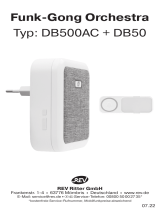 REV Ritter 0083950103 El manual del propietario
REV Ritter 0083950103 El manual del propietario
-
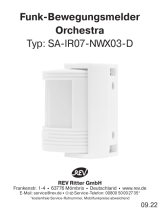 REV Ritter 0083960103 El manual del propietario
REV Ritter 0083960103 El manual del propietario
-
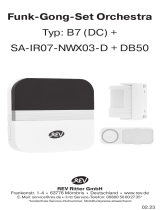 REV Ritter 0082640103 El manual del propietario
REV Ritter 0082640103 El manual del propietario
-
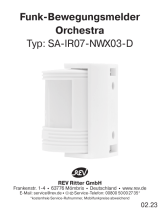 REV Ritter 0083960103 El manual del propietario
REV Ritter 0083960103 El manual del propietario
-
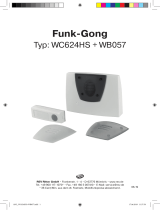 REV Ritter 0514902555 El manual del propietario
REV Ritter 0514902555 El manual del propietario
-
 REV Ritter 0082180103 El manual del propietario
REV Ritter 0082180103 El manual del propietario
-
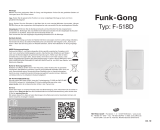 REV Ritter 0082420103 El manual del propietario
REV Ritter 0082420103 El manual del propietario
-
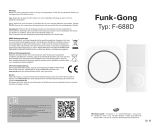 REV Ritter 0082350103 El manual del propietario
REV Ritter 0082350103 El manual del propietario
-
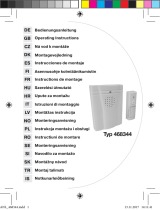 REV Ritter 468344 Operating Instructions Manual
REV Ritter 468344 Operating Instructions Manual
Otros documentos
-
Dörr WIRELESS GAME MOTION DETECTOR Manual de usuario
-
Dörr HA-300 Manual de usuario
-
Carlon RC4120 Instrucciones de operación
-
Byron BY236FE El manual del propietario
-
Byron BY401 El manual del propietario
-
Byron B421E El manual del propietario
-
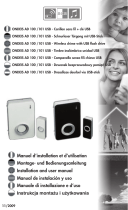 SCS Sentinel CSF0041 El manual del propietario
SCS Sentinel CSF0041 El manual del propietario
-
 Stern Quadrat Touchless Wall Mounted Faucet Guía de instalación
Stern Quadrat Touchless Wall Mounted Faucet Guía de instalación


































